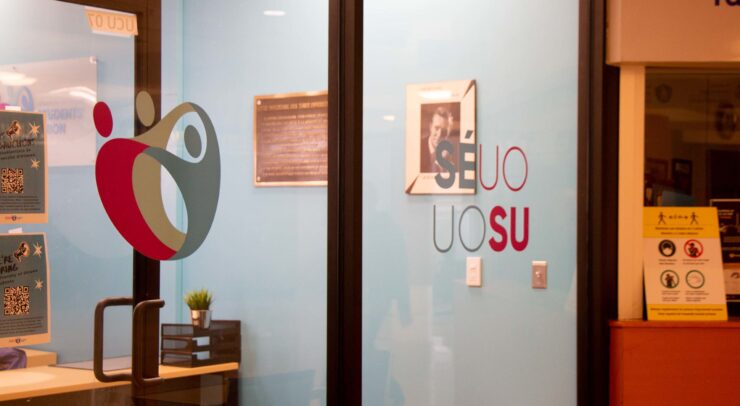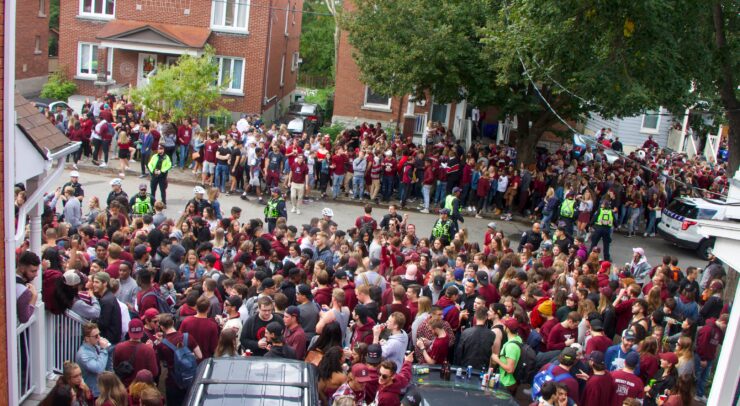The UOSU held their by-elections Nov. 9-11 yet multiple positions remain vacant
The University of Ottawa Students’ Union (UOSU) recently hosted their by-elections from Nov. 9-11. The results have since been tabulated and the winners announced, however, there are still multiple vacant positions available.
The UOSU has yet to fill all of their vacant positions and given the election results and their online list of Board of Directors (BOD) positions, the student life commissioner and six BOD seats are still available. All but emphasizing a lack of students running for these positions.
Over 300 students showed up for the UOSU’s Fall General Assembly (FGA) on Nov. 12, yet the attendance numbers compared to the amount of candidates suggests students would rather observe the workings of student politics from a distance than participate in it themselves.
For Tim Gulliver, the advocacy commissioner for the UOSU, there is still “a lot of work to do.”
“We did see a positive [upturn] with the one candidate that ran for the equity commissioners position that [was] filled. I think at the end of the day we have a lot of work to do to communicate and raise awareness about the good and powerful things that [the UOSU] does,” he said.
Still, he remains optimistic that student democracy at the U of O can turn around.
“[Our goal is] making people more aware that we’re here to fight for them … but I think we’re heading in the right direction of expanding student democracy on campus.”
While the by-elections represent a significant part of student democracy as Gulliver said, the lack of student participation means candidates often run unopposed. This lack of candidates leaves only a skeleton of a full student-democracy.
Julian Ward, a third-year civil engineering student is one of the new representatives for the faculty of engineering for the UOSU, and spoke about his decision to apply for the position.
“I’ve always been interested in politics, and student politics,” said Ward. “I have been involved in the Engineering Students’ Society (ESS) and I was on the Board of Directors for the last two years, and I also worked with the Canadian Society for Civil Engineering (CSCE).”
Ward said the next logical step for him was representing his faculty at the UOSU, especially as he saw a lack of motivation from engineering students to apply.
“I think it’s a completely different wheelhouse for most engineering students, especially as it’s hard to balance work, school, and extracurricular activities for most students.”
To learn why students do not run for a variety of reasons, a Fulcrum Instagram poll found many are either unsure how to run, do not speak French, or they are too busy already to add on the role of UOSU commissioner.
Some students even feel like the politics side of student-government can feel overwhelming.
Nicholas Morin, a student in software engineering, used to be the chair of the Election Committee for the UOSU from November 2019 to May 2020.
Morin said he “begrudgingly became the chair for the Elections Committee,” and he decided not to return to the UOSU after that term.
“I came into it knowing that it would be political, but it was much more than I anticipated. To the point where I felt that we weren’t accomplishing anything.”
Jayden Gwyn, a fourth-year political science student believes that one of the main factors in students not willing to participate in the UOSU is due to disinterest in politics.
Gwyn said, “there is so much politics inundating us all day, and it’s exhausting. Unless the students are political science nerds, many students from other faculties aren’t as interested in student politics.”
“Ultimately, the UOSU is supposed to be a union that represents the interests of students, such as lowering tuition fees.”
In addition to the lack of candidates, the UOSU also experiences a lack of volunteers. The lack of motivation for students to run for these roles on campus is also reflected in their willingness to volunteer on campus. While executive jobs with the UOSU come with a monetary incentive, volunteers are not paid for their work.
Alexandra Baril, the manager for community engagement at the University of Ottawa said “[that] as of today we have 1,500 individual students who have selected at least one volunteer opportunity that’s been posted on our online portal; [called] the community engagement navigator [on uOzone].”
With a student population of over 40,000, that means roughly 3.75 per cent of the student population are partaking in on-campus volunteer initiatives through the UOSU.
Baril said that students may be volunteering in other ways that are not credited by the community engagement team, however, a significant portion of the student population is still missing.
“In this time of the pandemic, not every student realizes that now there’s a lot more opportunities to be engaged virtually. Community partners [such as Baril] and the same for clubs and associations [such as UOSU] are innovating to figure out how to keep doing the good work during a pandemic,” said Baril in regards to adopting new virtual communities.





